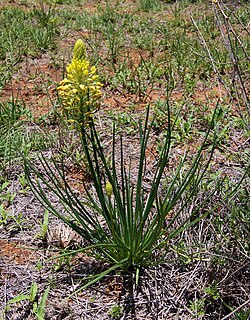| Bulbine abyssinica | |
|---|---|
 | |
| Scientific classification | |
| Kingdom: | Plantae |
| Clade: | Tracheophytes |
| Clade: | Angiosperms |
| Clade: | Monocots |
| Order: | Asparagales |
| Family: | Asphodelaceae |
| Subfamily: | Asphodeloideae |
| Genus: | Bulbine |
| Species: | B. abyssinica |
| Binomial name | |
| Bulbine abyssinica A.Rich. (1850) | |
| Synonyms [1] | |
| |
Bulbine abyssinica is a species of plant in the genus Bulbine , from eastern and southern Africa.